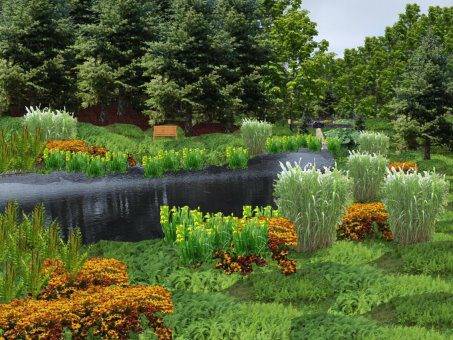Cabbage
Growing Information: Cabbage
CULTURE: Cabbage (as well as cauliflower, Brussels sprouts, broccoli, and related brassicas) is a heavy feeder and does best under fertile conditions with adequate soil moisture throughout the growing period.
EARLY SPRING CROP: Use early and midseason varieties. Sow 3-4 seeds/in. in flats, cold frame, outdoor seed bed or in 1-1 1/2″ plug trays 4-6 weeks before transplanting out. If possible keep soil temperature over 75F (24C) until germination, then reduce air temperature to about 60F (16C). Transplant outdoors 12-18″ apart in rows 18-36″ apart. Cabbage prefers cooler growing temperatures, between 55-75F (13-24C), optimum being 60-70F (16-21C), but will produce good crops under warmer, summer conditions.
FALL CROP: Use mid-season and storage varieties. Start seedlings as above in May and transplant to the garden in June-July. To ensure mature heads, seed the crop early in areas where heavy freezes occur early in fall.
WINTER CROP: Successful cabbage crops can be grown where winters are mild (temperatures rarely below 32F (0C)). Transplants can be set out from September to February in these regions.
DIRECT SEEDING: Sow 3-4 seeds 12″ apart, 1/2″ deep, rows 24-36″ apart, thinning to one plant in each group.
SPLITTING: Early varieties may split or burst at maturity or from rapid new growth if rain or heavy irrigation follows a dry spell. Splitting may be partially avoided by slowing a plant’s growth. To accomplish this, cultivate close to plants to sever some of the root system.
DISEASES: Adhere strictly to a preventive program including: (1) long crop rotations with non-cruciferous crops, (2) clean starting mixes and outdoor seedbeds, and (3) strict sanitation practices. Black rot, black leg, and Alternaria can be seed-borne. We stock lab-tested lots when available and hot water treat (to eliminate black rot) questionable lots.
NOTE: A disease-free test result means that in the sample tested, the pathogen targeted was not found. It does not guarantee a seed lot to be disease-free. However, no method of seed treatment can positively insure freedom from disease. We are glad to help with specific questions.
INSECT PESTS: Repel flea beetles and root maggots on young seedlings by covering with floating row covers from day of planting. Treat flea beetles with rotenone; pyrethrin if heavy pressure is observed. Cabbage worms and loopers: Dipel. Cutworm prevention: Cultivate soil 2-4 weeks before planting to work in cover crops and destroy weeds.
HARVEST AND STORAGE: Relatively young heads (still green and actively growing) store best. Ideal conditions are 32F (0C), 95-98% RH, and good air circulation. Store only disease-free heads.
DAYS TO MATURITY: From cool weather, spring transplanting. Subtract 10-14 days for late spring or early summer, warm weather transplanting. Add about 14 days for direct seeding.
AVG. PRECISION SEEDING RATE: 3,500’/oz., 5 1/4 oz./acre at 2 seeds/ft. and 2′ between rows.
TRANSPLANTS: Avg. 4,500 plants/oz.SIZED SEED: Standard except where otherwise noted.SEED SPECS: SEEDS/LB.: 75,000-175,000 (avg. 112,000).PKT: 0.12 gm. (avg. 100 seeds).
THE BENEFITS OF CABBAGE Cabbage is in the Brassica genus along with broccoli and cauliflower. Although it is the fourth most produced vegetable in the U.S., we tend to grow a small fraction of hundreds of varieties available. Cabbages are classified by head shape, round and flat-head being the most commonly seen, and come in white, green and purple. Taste varies by variety. Cultural Notes:Get an early crop started by setting out seedlings 2-3 weeks before the last expected frost. Space seedlings about 2-3 feet apart. A second crop can be planted in July. Even watering is the key to preventing cabbages from splitting.
Maintenance: Cabbage worms are the main pest threat. They don’t do a great deal of damage and can be hand picked easily, if you can see them. Their coloring allows them t blend in with the cabbage.Harvesting:Harvest when the head forms and they are firm to the touch. Leave the wide, outer leaves and just cut the head. Cabbages can be stored for months in a root cellar where the temperature is between 45 degrees F. and freezing. It is no wonder that the lowely, plain, boring cabbage gets rave reviews from the world of nutritionists. Cabbage is relatively cheap yet one of the richest when it comes to protective vitamins. Talk about the original weight loss food! One cup of cabbage contains only around 15 calories.Cabbage is rich in the following nutrients:Vitamin A: responsible for the protection of your skin and eyes.Vitamin C: an all important anti-oxidant and helps the mitochondria to burn fat.Vitamin E: a fat soluble anti-oxidant which plays a role in skin integrity.Vitamin B: helps maintain integrity of nerve endings and boosts energy metabolism.Modern science has proven beyond a reasonable doubt that the health benefits and therapeutic value of cabbage, which also plays a role in the inhibition of infections and ulcers. Cabbage extracts have been proven to kill certain viruses and bacteria in the laboratory setting. Cabbage boosts the immune system’s ability to produce more antibodies. Cabbage provides high levels of iron and sulphur, minerals that work in part as cleansing agents for the digestive system.

Recent Comments